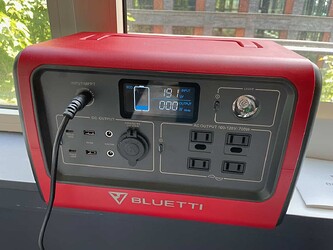When the battery is at 100% and then being used (discharging) the full charge does not affect lifespan much. So the continuous charge discharge cycle is normal. It’s only when at 100% and stewing in it’s own electrons for 6 months or more that it can diminish capacity. ANd, it does not happen all at once, it is a cumulative effect, like hearing loss.
This is not really correct. Basically there is only one degradation mechanism that matters in lithium ion batteries, and that is lithium dendrite growth. You will see this sometimes referred to as anode plating.
The reason they tell you to not charge to 100% - That last 20% requires a lot more effort to squeeze the electricity into the cell. This causes heat. Heat accelerates dendrite growth. Depending on how smart the battery/charge controller is, it may control charge to minimize temps, and that can jsut mean the 80-100% charge is just god awful slow instead of particularly damaging.
The reason they tell you to not discharge below 20% is because you are entering the realm where current draw may be hard for the battery to keep up with and this causes heat. Heat accelerates dendrite growth. Additionally, the less charge the cell has, the easier it is to shove in electricity. The junkier the charge controller, the more likely this is to not optimize the charge curve for heat. Heat accelerates dendrite growth. So in something like an EV, they tell you to avoid it because your potential draw is very high and the car will either let you do it, or seriously alter it’s performance to stop you form doing it. Something where the controller doesn’t control for temps, it’ll just let it get hot and that will shorten battery life. Things like EVs and current (at least mid tier+) smart phones are smart about this. Everything else is much more variable.
The reason they tell you to store it between 40-70% charge is because that’s the range where the self discharge curve slows down. It means you get the best compromise of state of charge when you need it and minimal battery life consumed with basic self discharge. All charging and discharging, even if not overheating, causes dendrite growth. It’s just slower under less abusive use cases. This recommendation is largely there if you want the largest portion of the batteries lifespan to go towards actual useful work for you.
So those dendrites do two things. They take lithium out of the charge/discharge cycle reducing battery capacity and maximum output ability. Additionally, they can eventually short out the cell and pose a fire risk especially if they grow rapidly. Trying to make 80-100% charge go quickly generally creates the environment for more rapid dendrite growth.
Solid state lithium batteries reduce or avoid these risks. There are a couple solid state battery packs out there, and it’s safe to assume we’ll be seeing even more.
Additionally, if you are using it regularly and recharging it leisurely, charging to 100% is not going to be too problematic. Something like RV use where you are driving 6-8 hours a day and not draining it to zero while parked overnight is probably not going to be pushing the pack that hard and your actual use curve will outpace the self discharge curve. IN that case, yes you are using up the lifespan of the battery, but you are using it for the stuff you bought it for. The store it at 60% rule would come into play when you have it parked unused between road trips.
